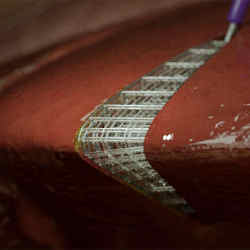A bio-ink developed at The Ohio State University (OSU) can be three-dimensionally printed at human body temperature, and solidified using visible light.
.
Researchers at The Ohio State University (OSU) have developed a bio-ink that can be three-dimensionally (3D) printed at human body temperature, and solidified using visible light.
.
Bio-inks are composed of living cells suspended in a gel and are safe for use inside people, potentially paving the way for 3D printing inside the body. Using a 3D printing nozzle affixed to robotic machinery to dispense bio-ink in a controlled manner, the researchers were able to bio-print onto soft materials, with interlocking knobs left beneath the surface anchoring the printed structure to the body like surgical staples. OSU’s David Hoelzle said the goal is not to bio-print an entire organ, but to “augment a standard surgery by delivering a biomaterial with a tethered growth factor to jumpstart healing, or […]
Case Study: How PepsiCo achieved 96% cost savings on tooling with 3D Printing Technology
Above: PepsiCo food, snack, and beverage product line-up/Source: PepsiCo PepsiCo turned to tooling with 3D printing...





0 Comments